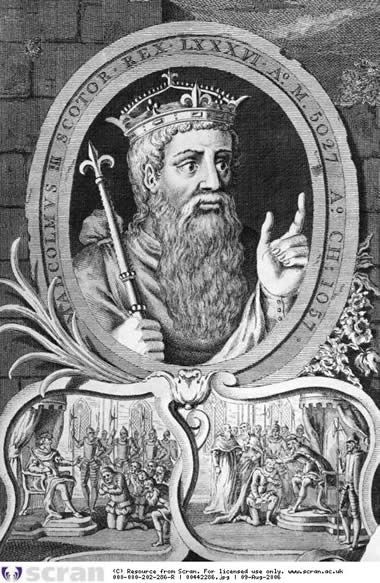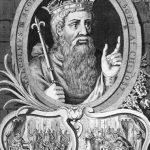Malcolm III (Gaelic: Máel Coluim mac Donnchada; c. 26 March 1031 – 13 November 1093) was King of Scots from 1058 to 1093. He was later nicknamed “Canmore” (“ceann mòr”, Gaelic for “Great Chief”: “ceann” denotes “leader”, “head” (of state) and “mòr” denotes “pre-eminent”, “great”, and “big”). Malcolm’s long reign of 35 years preceded the beginning of the Scoto-Norman age. Henry I of England was Malcolm’s son-in-law. Thus he is the grandfather of both Empress Matilda and William Adelin.
Malcolm’s kingdom did not extend over the full territory of modern Scotland: the north and west of Scotland remained under Scandinavian rule following the Norse invasions. Malcolm III fought a series of wars against the Kingdom of England, which may have had as its objective the conquest of the English earldom of Northumbria. These wars did not result in any significant advances southward. Malcolm’s primary achievement was to continue a lineage that ruled Scotland for many years,[3] although his role as founder of a dynasty has more to do with the propaganda of his youngest son David I and his descendants than with history.
Malcolm’s second wife, St. Margaret of Scotland, is Scotland’s only royal saint. Malcolm himself had no reputation for piety; with the notable exception of Dunfermline Abbey in Fife he is not definitely associated with major religious establishments or ecclesiastical reforms.


